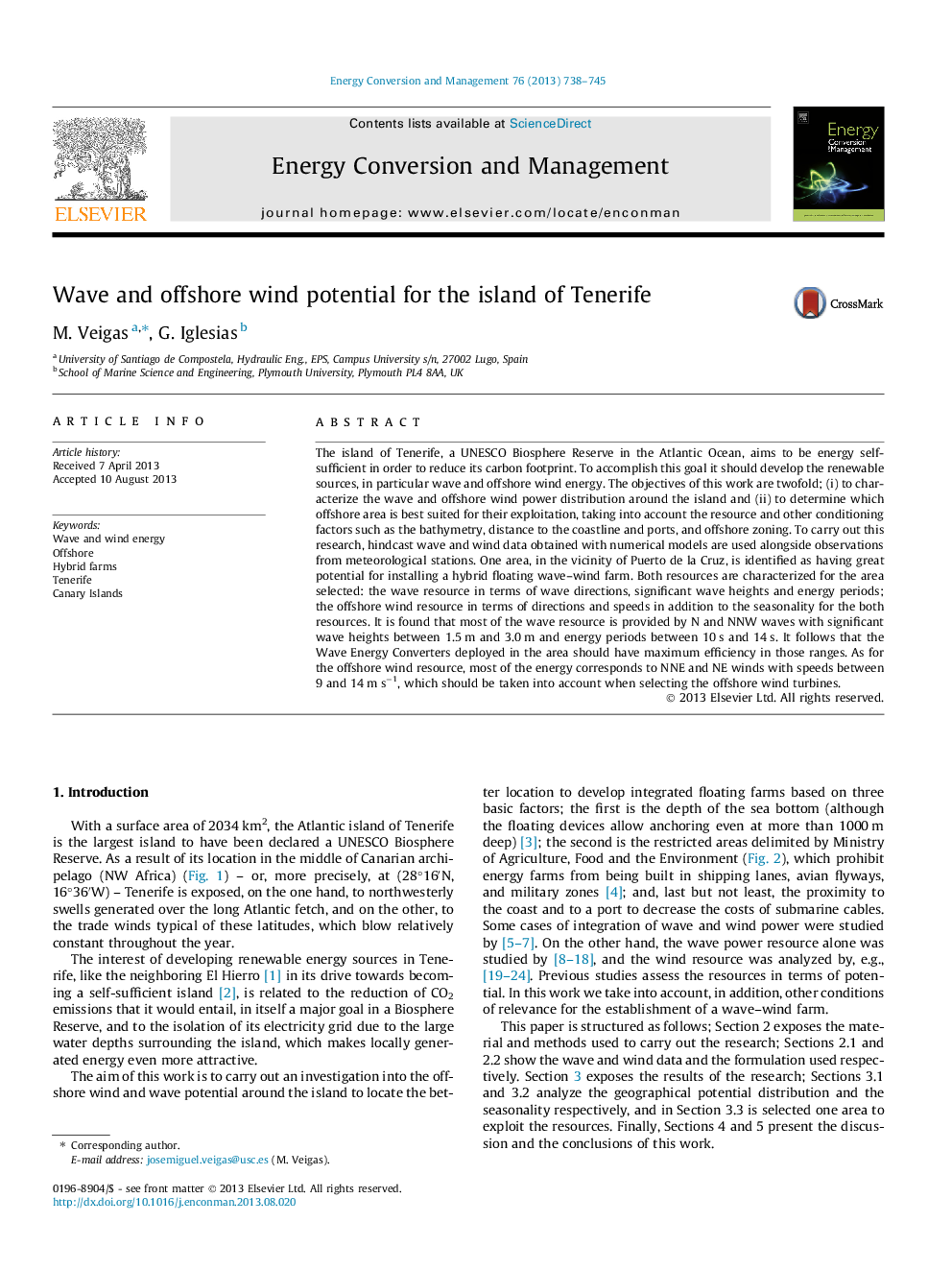| کد مقاله | کد نشریه | سال انتشار | مقاله انگلیسی | نسخه تمام متن |
|---|---|---|---|---|
| 760831 | 1462886 | 2013 | 8 صفحه PDF | دانلود رایگان |

• The island aims to reduce its carbon footprint by developing renewable energy.
• The substantial wave and offshore wind resources around the island are examined.
• One area is appropriate for installing a hybrid wave–offshore wind farm.
The island of Tenerife, a UNESCO Biosphere Reserve in the Atlantic Ocean, aims to be energy self-sufficient in order to reduce its carbon footprint. To accomplish this goal it should develop the renewable sources, in particular wave and offshore wind energy. The objectives of this work are twofold; (i) to characterize the wave and offshore wind power distribution around the island and (ii) to determine which offshore area is best suited for their exploitation, taking into account the resource and other conditioning factors such as the bathymetry, distance to the coastline and ports, and offshore zoning. To carry out this research, hindcast wave and wind data obtained with numerical models are used alongside observations from meteorological stations. One area, in the vicinity of Puerto de la Cruz, is identified as having great potential for installing a hybrid floating wave–wind farm. Both resources are characterized for the area selected: the wave resource in terms of wave directions, significant wave heights and energy periods; the offshore wind resource in terms of directions and speeds in addition to the seasonality for the both resources. It is found that most of the wave resource is provided by N and NNW waves with significant wave heights between 1.5 m and 3.0 m and energy periods between 10 s and 14 s. It follows that the Wave Energy Converters deployed in the area should have maximum efficiency in those ranges. As for the offshore wind resource, most of the energy corresponds to NNE and NE winds with speeds between 9 and 14 m s−1, which should be taken into account when selecting the offshore wind turbines.
Journal: Energy Conversion and Management - Volume 76, December 2013, Pages 738–745